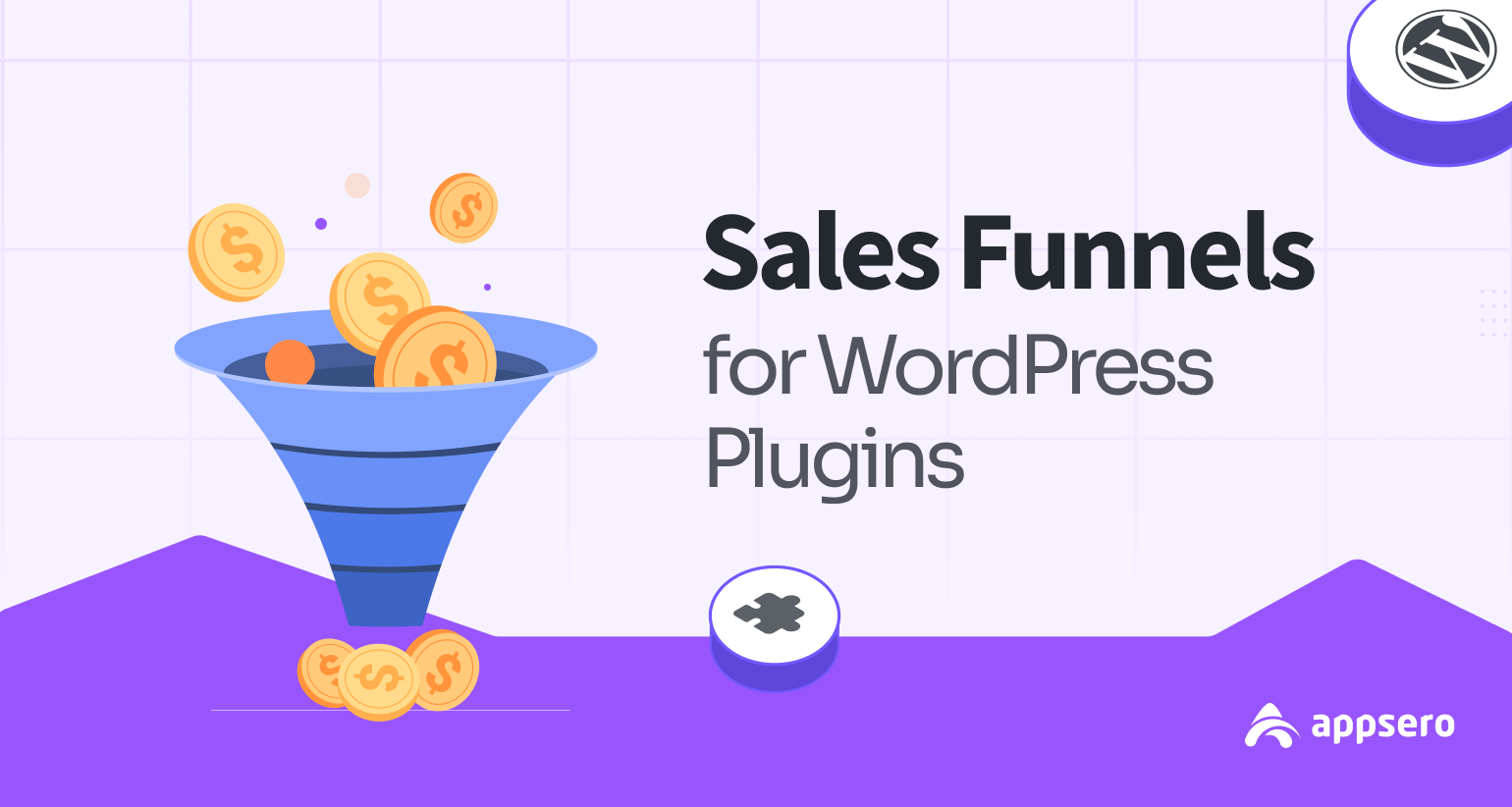
How to Optimize Sales Funnels for Your WordPress Plugin Businesses
What’s the ultimate goal of a WordPress plugin developer or a software company? To generate revenue by selling their products (obviously themes and software). But, most people struggle to reach their target auidence and convert them into paying customers.
No worry! In a crowded market, a well-crafted sales funnel can be the secret weapon to making the best use of your product’s potential. Whether you’re a solo developer or a small business, optimizing each stage of the funnel can boost visibility, drive conversions, and grow your revenue.
By understanding your customers’ journey and providing a seamless experience, you’ll stand out from the competition and watch your bottom line skyrocket. This guide will explore key stages of the WordPress sales funnel, and analyze strategies for optimization. Let’s know the basics first.
Understanding the Stages of a WordPress Sales Funnel
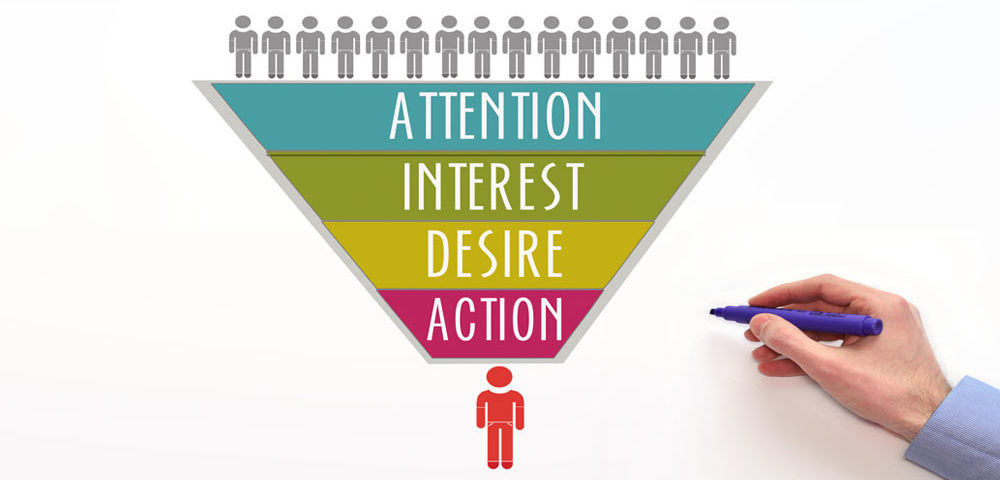
Generally, a sales funnel represents the journey a potential customer takes, from discovering your product to making a purchase. For a WordPress plugin business, this journey can be broken down into stages that reflect the decision-making process customers go through before becoming paid users.
Understanding these stages is key to optimizing your funnel and improving conversions. Here’s a breakdown of the primary stages in a typical WordPress sales funnel:
- Awareness Stage (Attention): Brand visibility is crucial at this stage, as prospects need to know your plugin exists before they can consider purchasing it.
- Interest Stage: This is where they start exploring your plugin’s features, benefits, and how it can solve their problems.
- Decision Stage (Desire): At this stage, potential customers seriously consider whether your plugin is the right solution for them.
- Action Stage: At this point, it’s vital to simplify the purchase process, ensuring that the checkout is smooth and hassle-free. Any friction here can result in lost sales.
*** The above four steps comprise the basic structure of the AIDA model. But, to be successful in the long run, you also need to offer post-sale services. That’s why we added a post-sale stage.
- Post-Sale Stage: The customer journey doesn’t end even after the purchase. Post-sale optimization focuses on retaining and upselling customers.
Map out the customer journey from awareness to post-sale and gather actionable insights. Thus, you can tailor your marketing efforts and optimize each step of the sales funnel to increase sales and improve customer satisfaction.
Why Sales Funnels Matter for WordPress Plugin Businesses
Sales funnels are a powerful tool for WordPress plugin businesses to attract, engage, and convert potential customers into paying clients. A well-optimized sales funnel can mean the difference between steady growth and missed opportunities. How? The following points cover the answer.
Increased Conversions
A well-designed sales funnel guides visitors through the buying process. It empowers you with vital information like the target audience’s needs and preferences. This allows you to create a compelling customer journey that leads to more sales.
Improved Customer Experience
A seamless sales funnel provides a positive customer experience and cultivates loyalty. It helps you address customer pain points by offering relevant solutions. Thus, you can build trust and establish your business as a reliable partner.

Data-Driven Insights
Sales funnels allow you to track customer behavior and gather valuable data. This information can be used to optimize your marketing efforts, identify areas for improvement, and make data-driven decisions.
Effective Lead Generation
A well-structured sales funnel helps you generate qualified leads by capturing visitor information and nurturing them throughout the sales process.
Scalability
Sales funnels can be scaled to accommodate growth and increased demand. As your business expands, you can refine your funnel to attract and convert more customers.
How to Optimize Sales Funnel for WordPress Plugin Businesses

1. Awareness Stage: Driving Traffic
The Awareness Stage is all about driving traffic and increasing your plugin’s visibility. You need to focus on organic and paid methods to drive more website traffic.
Start with Search Engine Optimization (SEO). Optimize your website and content for relevant keywords to rank higher in search results. Additionally, effective content marketing—such as blog posts, tutorials, and guides—can help educate and attract potential customers.
Social media marketing is another crucial tactic, where engaging with your target audience on platforms like Facebook, LinkedIn, and Twitter can expand your reach.
You can also leverage partnerships with influencers or affiliate marketers to expand your reach.
Finally, using paid advertising through platforms like Google Ads and Facebook Ads allows you to run targeted campaigns to capture the attention of a wider, relevant audience.
2. Interest Stage: Engaging Prospects

The Interest Stage focuses on engaging prospects and turning traffic into potential leads. Begin by defining your target audience—identify your ideal customer, understand their needs and pain points, and develop detailed buyer personas to guide your messaging.
Craft a compelling value proposition that clearly articulates how your plugin solves its specific problems while highlighting its unique features to differentiate it from competitors. To capture their interest, create targeted landing pages for specific campaigns, and use lead magnets like ebooks, templates, or checklists to entice visitors to share their contact details.
Additionally, strategically place pop-ups and forms on your website to increase lead capture and engage prospects in a timely manner. Send regular updates, tutorials, and case studies to nurture leads.
If you want to go the extra mile, consider providing free versions or live demos to give users a hands-on experience with your plugin’s features. And, you can also host educational webinars and publish video tutorials to showcase how your plugin solves users’ problems.
3. Decision Stage: Encouraging Conversions
At the Decision Stage, the goal is to encourage prospects to take action and convert into paying customers. Start with clear product pages that explain the value, features, and pricing of your plugin in detail.
Include customer reviews and testimonials to provide social proof, helping to build trust. Consider using time-limited offers like discounts, free trials, or special promotions to create urgency and push prospects to make a quicker decision.

Additionally, for those using a free version of your plugin, use a freemium-to-premium conversion strategy by offering enticing upgrades, such as extra features or priority support, to motivate them to switch to the premium version. Here’s how the Decision Stage can be shown in a table:
| Optimization | Description |
|---|---|
| Informative Product Pages | Ensure product pages explain the value, features, and USP of your plugin. |
| Testimonials and Case Studies | Showcase customer success stories to build credibility and trust. |
| Social Proof | Display reviews, ratings, and awards to reassure potential buyers. |
| Time-Limited Offers | Use discounts, free trials, or limited-time offers to create urgency and prompt faster decisions. |
| Freemium-to-Premium Conversion | Encourage free users to upgrade to the premium version by highlighting additional features or priority support. |
| Clear Pricing and Packages | Present pricing options in a transparent and attractive way to facilitate informed decisions. |
Once a customer is ready to buy, make the process as smooth as possible. Optimizing the Action Stage is the only way to move forward and convert the visitor into a paying customer.
4. Action Stage: Simplifying the Purchase Process
In the Action Stage, it’s crucial to streamline the checkout process by minimizing form fields and offering multiple payment methods to reduce cart abandonment. Ensure that the checkout experience is user-friendly, seamless, and secure to enhance conversions.
Providing clear terms and conditions, including transparent information on pricing, usage, and refund policies, helps build trust with customers. Additionally, offering upsell and cross-sell opportunities during or after the purchase can help maximize transaction value and drive further revenue growth.
5. Post-Sale Optimization: Retaining and Upselling Customers
A smooth onboarding process is essential to impress the users as soon as they start experiencing your product. Provide clear instructions, helpful tips, tutorials, and support to ensure customers can effectively use the plugin.
You must offer responsive customer support to further strengthen relationships and address any potential issues. Regular engagement, such as sending updates and relevant content, helps maintain customer satisfaction and reduce churn.
Upselling premium features or related services to existing customers create opportunities to increase their lifetime value. Besides, loyalty programs and rewards for repeat customers can encourage long-term retention and brand loyalty.
Also Read: How to Reduce Customer Churn in 10 Proven Ways
6. Measuring Funnel Performance and Optimizing
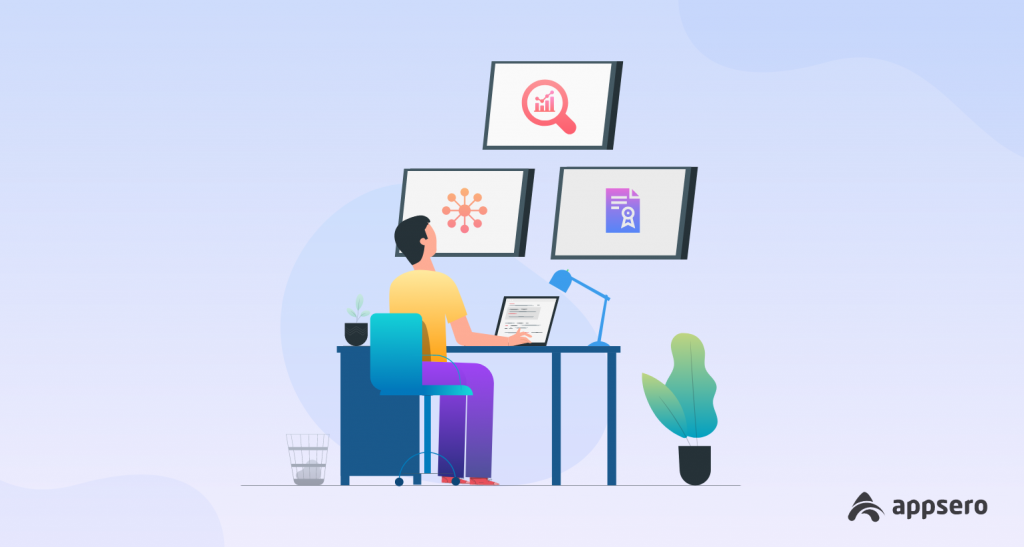
You need to track key metrics using tools like Google Analytics and other funnel analysis platforms to monitor website traffic, lead generation, conversion rates, and customer churn. For WordPress products, Appsero can help you gain insights into the plugin sales, activation, and deactivation data.
And, don’t settle for less. Conduct regular A/B testing to identify the most effective elements of your funnel, from headlines to calls-to-action, enabling continuous optimization.
Collecting customer feedback is vital to understanding user preferences and needs, which can guide adjustments to improve satisfaction. And, don’t forget that knowing the Customer Lifetime Value (CLTV) helps measure the long-term profitability of each customer. So, calculate CLTV for more strategic decision-making.
Best Practices for Sales Funnel Optimization
We’ve already shared a few best practices of sales funnel optimization in our how-to part. But, there is more to add. You need to adhere to these best practices to create a customer-focused sales funnel that leads to better results. Here are some best practices to follow:
- Know Your Target Audience: Understand the needs, pain points, and preferences of your ideal customers. Develop detailed buyer personas to guide your marketing and sales strategies.
- Create a Compelling Value Proposition: Clearly articulate the benefits of your plugin and how it solves your customers’ problems. Highlight unique features and differentiators from competitors.
- Optimize for Mobile: Ensure your entire sales funnel is mobile-friendly and accessible across devices. Test all funnel steps to guarantee smooth functionality on mobile.
- Prioritize User Experience (UX): Provide a seamless and enjoyable buying journey. Optimize website navigation, speed, and design to reduce friction in the funnel.
- Leverage Automation: Use marketing automation tools to streamline tasks like email marketing, lead nurturing, and follow-ups. Automate repetitive tasks to save time and keep prospects engaged.
- Personalize the Experience: Use data to create customer segments based on behavior, demographics, and interests. Customize your marketing efforts to cater to each segment for maximum effectiveness. You can produce dynamic content and personalized emails to boost engagement and conversions.
- Test and Iterate: Continuously experiment with different elements of your sales funnel, such as landing pages, CTAs, and pricing strategies. Use A/B testing to identify high-performing variations and optimize accordingly.
- Shorten the Sales Cycle: Reduce friction by offering clear pricing, easy navigation, and addressing common objections upfront.
- Stay Up-to-Date: Keep your sales funnel aligned with the latest industry trends and best practices. Regularly review and adjust your strategies to stay competitive in the evolving marketplace.
By following these best practices, you can continuously refine your sales funnel to maximize effectiveness, increase conversions, and drive long-term growth for your WordPress plugin business.
Use Appsero to Optimize Your WordPress Sales Funnel
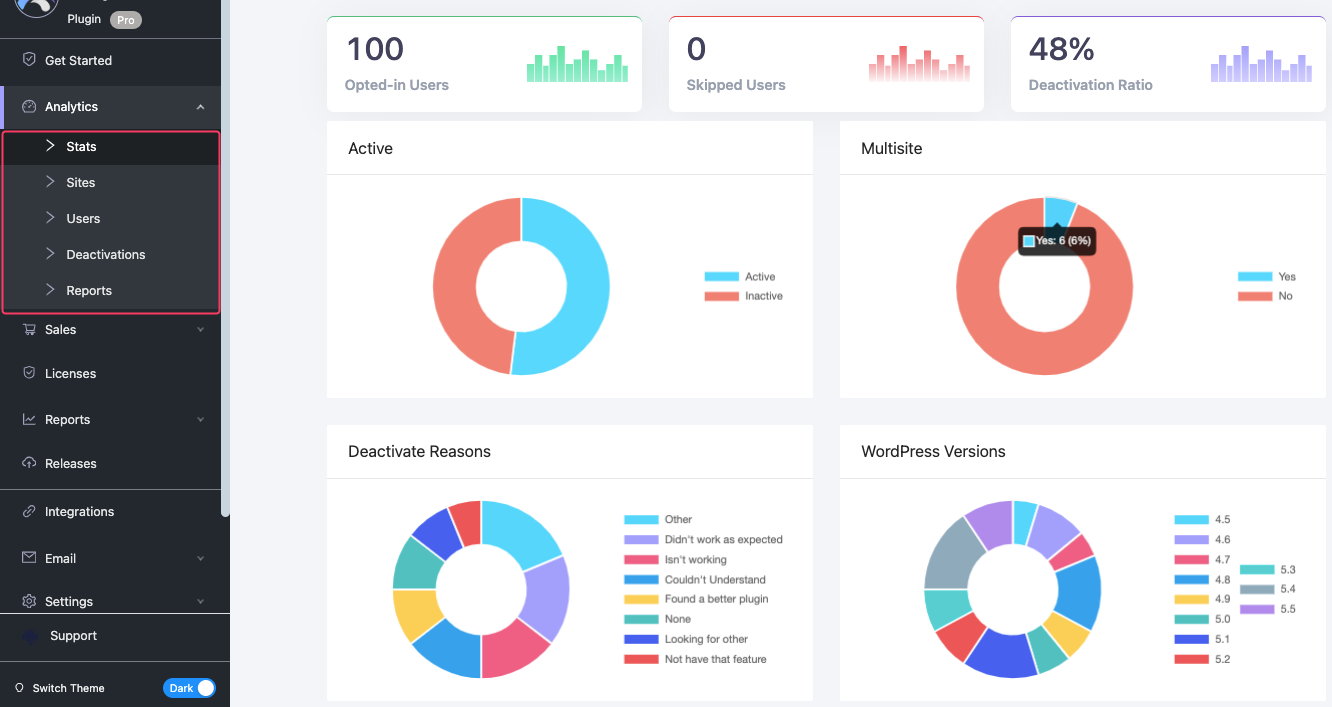
For WordPress plugin businesses, converting free users into paying customers and retaining them long-term, requires data-driven insights to ensure maximum efficiency. This is where Appsero’s analytics feature becomes invaluable.
It provides comprehensive data on customer behavior, product performance, and revenue, helping plugin developers make informed decisions. By integrating Appsero into your WordPress plugin business, you gain access to powerful analytics that allow you to optimize each stage of your sales funnel effectively. Here’s how:
1. Get Detailed User Data
Appsero tracks the WordPress versions, server software, and PHP/MySQL versions used by customers. By understanding the technical environment of users, you can tailor content marketing efforts (blog posts, tutorials) to resonate with their specific needs, attracting more relevant traffic.
2. Gain Deep User Insights
Knowing the geographical location of customers (via billing data) helps target paid ads (Google Ads, Facebook Ads) and social media campaigns to regions that have shown the most engagement or revenue potential.
3. Capture and Optimize Leads

With Appsero’s customer database, you can filter and export information about active and lost users, which allows for more personalized engagement through targeted email campaigns or lead magnets.
4. Make the Best Use of the Freemium Model
By tracking how free users interact with your plugin (e.g., active domains), you can identify the features they use most. This helps in creating personalized offers that could encourage them to upgrade to the premium version, increasing the conversion potential.
5. Track Sales and Revenue Data
Detailed revenue reports help you understand which offers or discounts worked best in the past, enabling you to craft more effective limited-time promotions or bundle deals that convert hesitant prospects into paying customers.
6. Customer Support and Retention
Appsero provides full visibility into customer data like email, purchase history, and plugin usage. With this data, you can engage existing customers with tailored upsell offers, loyalty programs, or special promotions.
7. Track Subscription Plan Tracking
You can monitor active and inactive subscriptions and target customers whose subscriptions are about to expire with timely renewal offers. This ensures retention and boosts lifetime customer value.
Appsero’s analytics offers deep insights into customer behavior, financial performance, and product usage that are key to driving conversions and maximizing revenue. Explore the features
5 Best Sales Funnel Optimization Plugins for WordPress
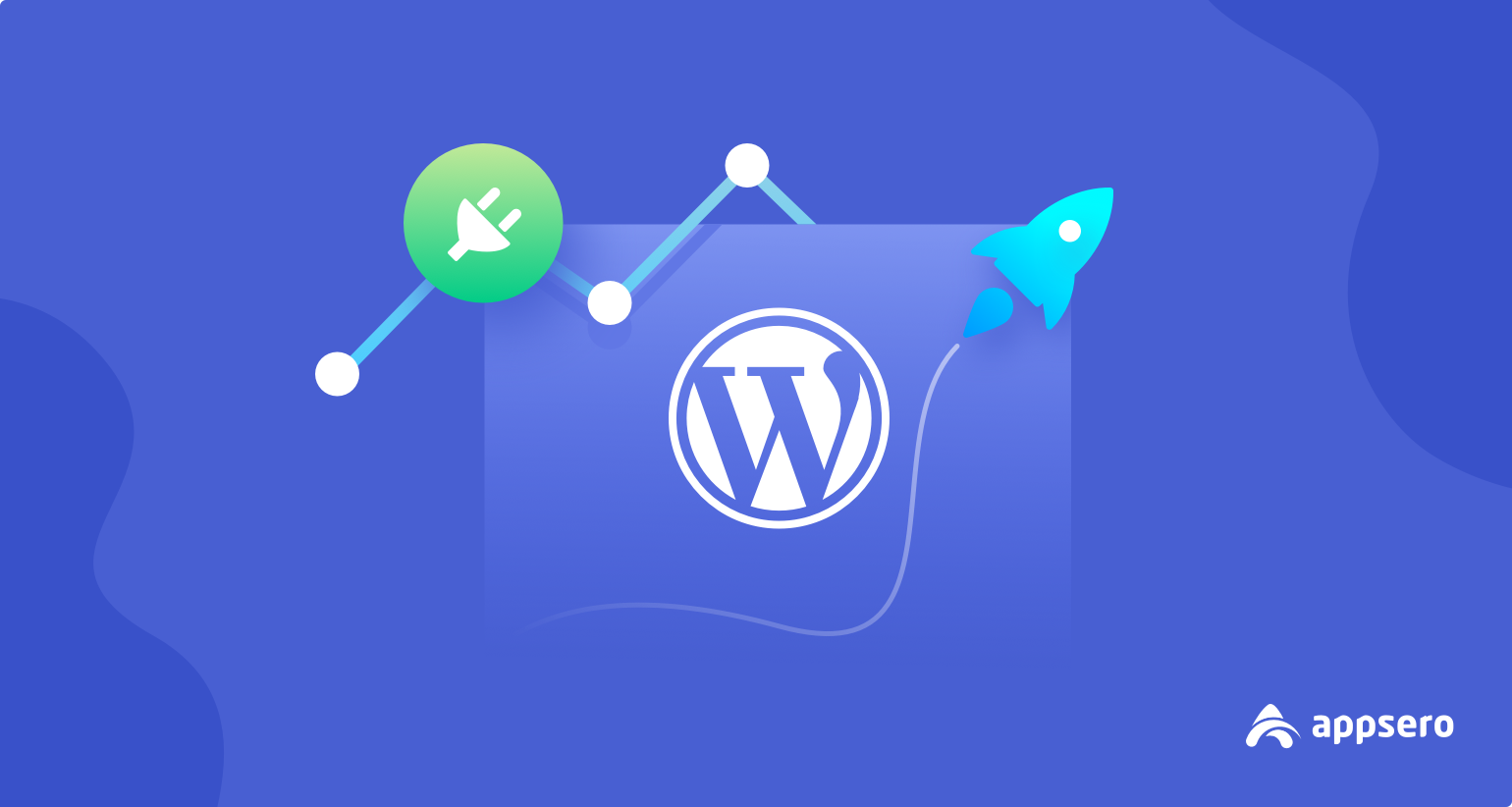
Managing and improving a sales funnel can become complex as it requires various elements like lead generation, checkout optimization, upselling, and analytics to work seamlessly together. Thankfully, WordPress offers a wide range of plugins that can streamline the process, helping you build, manage, and optimize sales funnels at every stage.
These plugins integrate with essential tools like WooCommerce, CRM systems, and email marketing software. Below is a curated list of 5 of the best sales funnel optimization plugins for WordPress, designed to help you drive conversions and maximize sales.
1. CartFlows
CartFlows is one of the most popular funnel-building plugins for WordPress. It enables you to create optimized sales funnels with features like customizable checkout pages, order bumps, and one-click upsells. Its integration with WooCommerce makes it perfect for any eCommerce website looking to maximize conversions.
2. FunnelKit
Formerly known as WooFunnels, FunnelKit is a comprehensive tool that allows you to build sales funnels using pre-built templates and customizable elements. It includes advanced features like order bumps, upsells, and analytics to track your funnel performance, making it an all-in-one solution for optimizing conversion rates.
3. WPFunnels
WPFunnels is a visual funnel builder that requires no coding skills. It offers tools to create sales pages, checkout flows, and upsell funnels for your WordPress products. Its intuitive drag-and-drop editor simplifies funnel creation, allowing you to create sophisticated funnels that convert leads into paying customers.
4. OptinMonster
OptinMonster is a leader in lead generation and conversion optimization. It allows you to create pop-ups, slide-ins, and opt-in forms that convert visitors into leads. Its advanced targeting and personalization features help you reach the right audience at the right time, enhancing both the awareness and interest stages of your funnel.
5. weMail

weMail is an all-in-one email marketing solution designed specifically for WordPress users. With its drag-and-drop email builder, customizable templates, automation feature, and advanced segmentation options, weMail enables you to design targeted email campaigns that engage your audience effectively. Additionally, weMail provides analytics and reporting features, allowing you to track campaign performance and make data-driven decisions to enhance your marketing strategy.
Final Thoughts on How to Optimize Sales Funnels
The sales funnel serves as a roadmap, guiding prospects through their decision-making process while providing the necessary touchpoints to build trust and engagement. Each stage presents unique opportunities and challenges. This makes it essential to leverage the right strategies and tools for maximum effectiveness.
Utilizing powerful analytics tools like Appsero can greatly enhance your understanding of user behavior, allowing you to make informed decisions. Additionally, incorporating top-tier sales funnel optimization plugins such as CartFlows, and weMail can significantly enhance your marketing efforts.
Whether it’s through optimized landing pages, effective email marketing, or detailed sales reporting, these plugins empower you to create a more efficient and impactful sales funnel. So, invest time and resources into understanding your audience and implementing best practices. Only then you can transform your WordPress plugin business into a thriving venture.
Subscribe To Our Newsletter
Don’t miss any updates of our new templates and extensions
and all the astonishing offers we bring for you.




